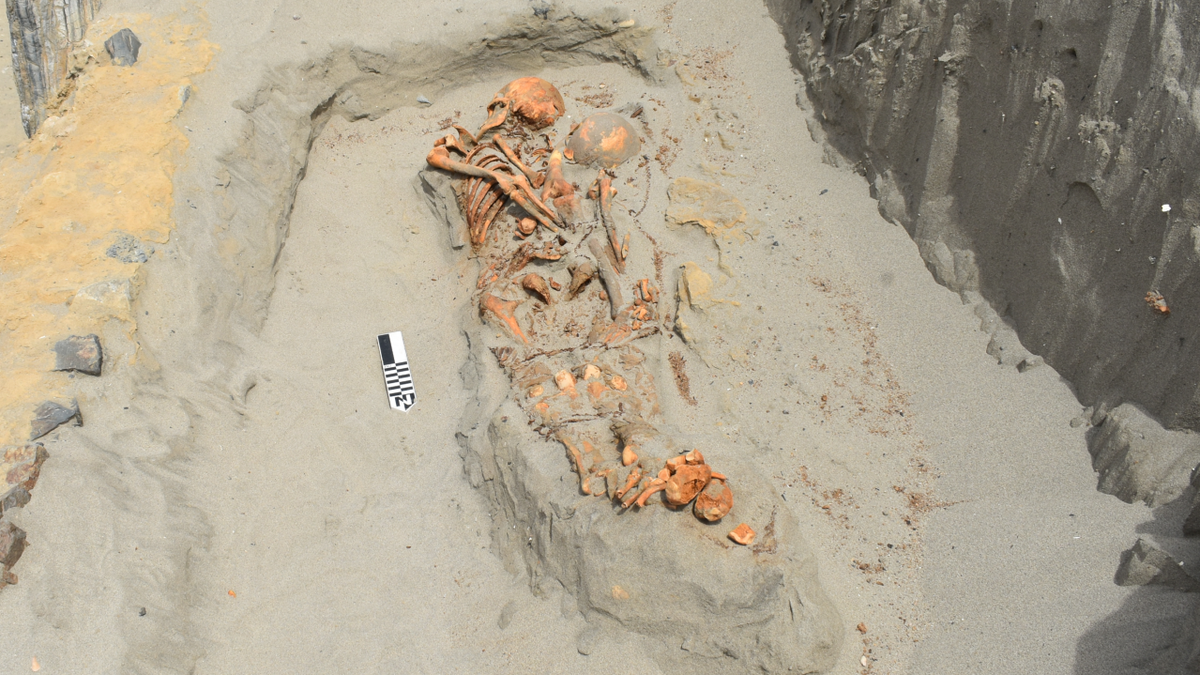Follow us on Google News (click on ☆)
The excavations revealed more than a dozen individuals buried approximately 2,300 years ago. Professor Henry Tantaleán, from the National University of San Marcos, is leading this work. He notes that the bodies were placed face down, a rare practice in prehistoric Andes.

One of the individuals discovered at the site, possibly a victim of human sacrifice.
Credit: Henry Tantaleán
Several skeletons show skull fractures and traces of bindings on the wrists and neck. These clues reveal violent, potentially ritual deaths. The absence of funeral offerings reinforces this hypothesis of sacrifices.
The temple complex of Puemape, on the northwest coast of Peru, was explored in 2024 and 2025. The temple itself is older, dating back about 3,000 years. The sacrifices appear to have taken place after its abandonment, around 400 to 200 BCE.
The origin of the victims remains mysterious. They could be locals or come from neighboring valleys. DNA analysis and other studies are underway to learn more about their identity and cultural context. Ceramics, animal and plant remains were also found on site. These elements will help reconstruct the practices of the time.

An individual with hands possibly bound before the sacrifice.
Credit: Henry Tantaleán
The research benefits from the support of the University of South Florida and archaeologist Charles Stanish.
What is funerary archaeology?
Funerary archaeology is a discipline that studies burials and burial practices of past societies. It helps understand beliefs, social structures, and rituals related to death.
Researchers analyze the position of bodies, accompanying objects, and traces on skeletons. These data reveal information about the health, diet, and causes of death of ancient populations.
In the case of human sacrifices, funerary archaeology helps identify signs of ritual violence. It thus contributes to reconstructing the religious systems and power dynamics of vanished civilizations.
How are archaeological discoveries dated?
Dating artifacts and skeletons uses various scientific methods. Carbon-14 dating is common for organic materials, measuring the radioactive decay of carbon. Other techniques include thermoluminescence for ceramics or stratigraphy to situate archaeological layers. These methods allow for precise chronologies of sites.
For discoveries in Peru, dating combines the analysis of ceramic styles and radiometric tests. This helps place events on the timeline.